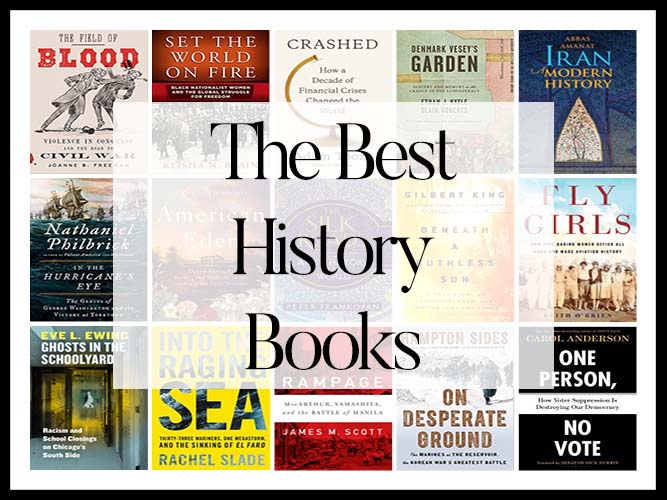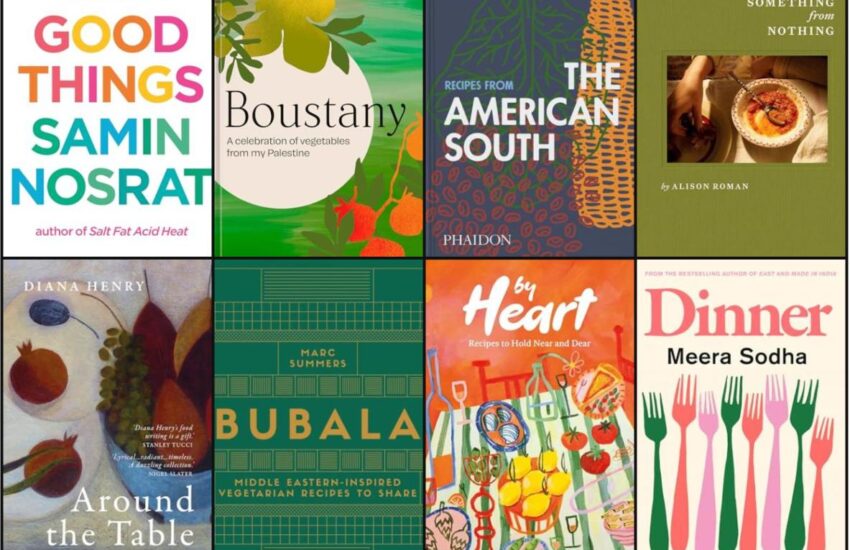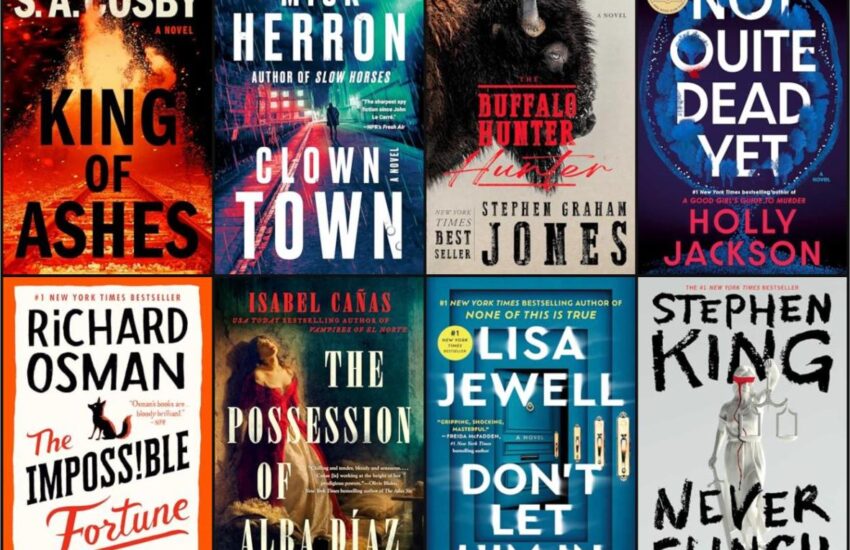The Best History Books of 2018 (A Year-End List Aggregation)
“What are the Best History books of 2018?” We aggregated 12 year-end lists and ranked the 165 unique titles by how many times they appeared in an attempt to answer that very question!
There are thousands of year-end lists released every year and like we do in our weekly Best Book articles, we wanted to see which books appear the most. The top 32 books, all of which appeared on 2 or more “Best History” Book ists, are ranked below with images, summaries, and links for more information or to purchase. The remaining 100+ books, as well as the top book lists are at the bottom of the page.
Make sure to take a look at our other Best of 2018 book lists:
- The Best Fiction Books of 2018
- The Best Nonfiction Books of 2018
- The Best Science Fiction & Fantasy Books of 2018
- The Best Science & Nature Books of 2018
- The Best Cookbooks of 2018
- The Best Graphic Novels & Comics Books of 2018
- The Best Art & Photography & Coffee Table Books of 2018
- The Best Books All Categories of 2018
- The Best Biography & Memoir Books of 2018
- The Best Poetry Books of 2018
- The Best History Books of 2018
- The Best Children’s Books of 2018
- The Best Young Adult Books of 2018
You can also take a look at our Best History books from last year as well as all the other Best 2017 articles!
Happy Scrolling!
Top 32 History Books Of 2018
32 .) American Eden: David Hosack, Botany, and Medicine in the Garden of the Early Republic written by VICTORIA JOHNSON

Lists It Appears On:
- Amazon
- The New York Times
On a clear morning in July 1804, Alexander Hamilton stepped onto a boat at the edge of the Hudson River. He was bound for a New Jersey dueling ground to settle his bitter dispute with Aaron Burr. Hamilton took just two men with him: his “second” for the duel, and Dr. David Hosack. As historian Victoria Johnson reveals in her groundbreaking biography, Hosack was one of the few points the duelists did agree on. Summoned that morning because of his role as the beloved Hamilton family doctor, he was also a close friend of Burr. A brilliant surgeon and a world-class botanist, Hosack—who until now has been lost in the fog of history—was a pioneering thinker who shaped a young nation. Born in New York City, he was educated in Europe and returned to America inspired by his newfound knowledge. He assembled a plant collection so spectacular and diverse that it amazes botanists today, conducted some of the first pharmaceutical research in the United States, and introduced new surgeries to American. His tireless work championing public health and science earned him national fame and praise from the likes of Thomas Jefferson, James Madison, Alexander von Humboldt, and the Marquis de Lafayette. One goal drove Hosack above all others: to build the Republic’s first botanical garden. Despite innumerable obstacles and near-constant resistance, Hosack triumphed when, by 1810, his Elgin Botanic Garden at last crowned twenty acres of Manhattan farmland. “Where others saw real estate and power, Hosack saw the landscape as a pharmacopoeia able to bring medicine into the modern age” (Eric W. Sanderson, author of Mannahatta).
31 .) Broken Lives: How Ordinary Germans Experienced the 20th Century written by Konrad H. Jarausch
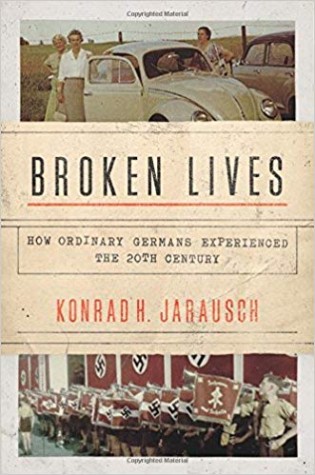
Lists It Appears On:
- Kirkus
- Smithsonian
Drawing on six dozen memoirs by the generation of Germans born in the 1920s, Konrad Jarausch chronicles the unforgettable stories of people who not only lived through the Third Reich, World War II, the Holocaust, and Cold War partition, but also participated in Germany’s astonishing postwar recovery, reunification, and rehabilitation. Written decades after the events, these testimonies, many of them unpublished, look back on the mistakes of young people caught up in the Nazi movement. In many, early enthusiasm turns to deep disillusionment as the price of complicity with a brutal dictatorship–fighting at the front, aerial bombardment at home, murder in the concentration camps―becomes clear.
30 .) Churchill: Walking with Destiny written by ANDREW ROBERTS
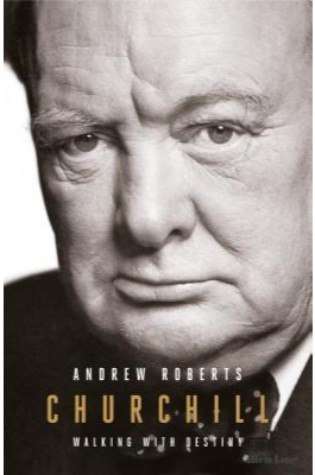
Lists It Appears On:
- Prospect
- The New York Times
A landmark reconsideration of the iconoclastic war leader, based on extensive new material–from private letters to war cabinet meetings– by the bestselling, award-winning author of Napoleon and The Storm of War. When we seek an example of unalloyed courage, the man who comes to mind is Winston Churchill: the visionary leader, immune from the consensus of the day, who stood firmly for his beliefs when everyone doubted him. But how did young Winston become Churchill? What gave him the strength to take on the superior force of Nazi Germany when bombs rained on London and so many others had caved? In The Storm of War, Andrew Roberts gave us a tantalizing glimpse of Churchill the war leader. Now, at last, we have the full and definitive biography, as personally revealing as it is compulsively readable, about one of the great leaders of all time. Roberts was granted exclusive access to extensive new material: the transcripts of war cabinet meetings– the equivalent of the Nixon and JFK tapes–diaries, letters, unpublished memoirs, and detailed notes taken by the king after their bi-weekly meetings. Having read every one of Churchill’s letters–including deeply personal ones that Churchill’s son Randolph had previously chosen to withhold–and spoken to more than one hundred people who knew or worked with him, Roberts identifies the hidden forces fueling Churchill’s drive. Churchill put his faith in the British Empire and fought as hard to preserve it as he did to defend London. Having started his career in India and South Africa, he understood better than most idealists how hard it can be to pacify reluctant people far from home.
29 .) CRASHED: HOW A DECADE OF FINANCIAL CRISES CHANGED THE WORLD written by ADAM TOOZE
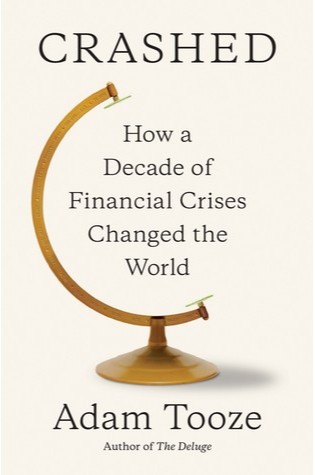
Lists It Appears On:
- Kirkus
- The New York Times
From a prizewinning economic historian, an eye-opening reinterpretation of the 2008 economic crisis (and its ten-year aftermath) as a global event that directly led to the shockwaves being felt around the world today. In September 2008 President George Bush could still describe the financial crisis as an incident local to Wall Street. In fact it was a dramatic caesura of global significance that spiraled around the world, from the financial markets of the UK and Europe to the factories and dockyards of Asia, the Middle East, and Latin America, forcing a rearrangement of global governance. In the United States and Europe, it caused a fundamental reconsideration of capitalist democracy, eventually leading to the war in the Ukraine, the chaos of Greece, Brexit, and Trump. It was the greatest crisis to have struck Western societies since the end of the Cold War, but was it inevitable? And is it over? Crashed is a dramatic new narrative resting on original themes: the haphazard nature of economic development and the erratic path of debt around the world; the unseen way individual countries and regions are linked together in deeply unequal relationships through financial interdependence, investment, politics, and force; the ways the financial crisis interacted with the spectacular rise of social media, the crisis of middle-class America, the rise of China, and global struggles over fossil fuels. Finally, Tooze asks, given this history, what now are the prospects for a liberal, stable, and coherent world order?
28 .) Denmark Vesey’s Garden: Slavery and Memory in the Cradle of the Confederacy written by Ethan Kytle and Blain Roberts
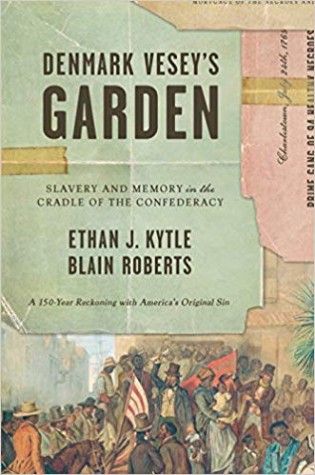
Lists It Appears On:
- Black Perspectives
- Kirkus
A book that strikes at the heart of the recent flare-ups over Confederate symbols in Charlottesville, New Orleans, and elsewhere, Denmark Vesey’s Garden reveals the deep roots of these controversies and traces them to the heart of slavery in the United States: Charleston, South Carolina, where almost half of the U.S. slave population stepped onto our shores, where the first shot at Fort Sumter began the Civil War, and where Dylann Roof shot nine people at Emanuel A.M.E. Church, the congregation of Denmark Vesey, a black revolutionary who plotted a massive slave insurrection in 1822.
27 .) Fascism: A Warning written by Madeleine Albright
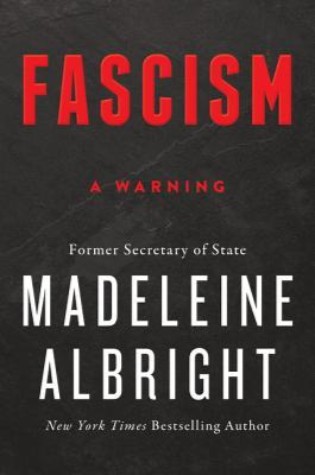
Lists It Appears On:
- Amazon
- NPR
A personal and urgent examination of Fascism in the twentieth century and how its legacy shapes today’s world, written by one of America’s most admired public servants, the first woman to serve as U.S. secretary of state A Fascist, observes Madeleine Albright, “is someone who claims to speak for a whole nation or group, is utterly unconcerned with the rights of others, and is willing to use violence and whatever other means are necessary to achieve the goals he or she might have.” The twentieth century was defined by the clash between democracy and Fascism, a struggle that created uncertainty about the survival of human freedom and left millions dead. Given the horrors of that experience, one might expect the world to reject the spiritual successors to Hitler and Mussolini should they arise in our era. In Fascism: A Warning, Madeleine Albright draws on her experiences as a child in war-torn Europe and her distinguished career as a diplomat to question that assumption. Fascism, as she shows, not only endured through the twentieth century but now presents a more virulent threat to peace and justice than at any time since the end of World War II. The momentum toward democracy that swept the world when the Berlin Wall fell has gone into reverse. The United States, which historically championed the free world, is led by a president who exacerbates division and heaps scorn on democratic institutions. In many countries, economic, technological, and cultural factors are weakening the political center and empowering the extremes of right and left. Contemporary leaders such as Vladimir Putin and Kim Jong-un are employing many of the tactics used by Fascists in the 1920s and 30s. Fascism: A Warning is a book for our times that is relevant to all times. Written by someone who has not only studied history but helped to shape it, this call to arms teaches us the lessons we must understand and the questions we must answer if we are to save ourselves from repeating the tragic errors of the past.
26 .) Gandhi: 1914-1948—The Years that Changed the World written by RAMACHANDRA GUHA
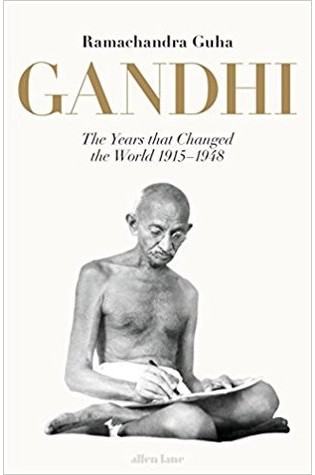
Lists It Appears On:
- Prospect
- The New York Times
Gandhi lived one of the great 20th-century lives. He inspired and enraged, challenged and delighted many million men and women around the world. He lived almost entirely in the shadow of the British Raj, which for much of his life seemed a permanent fact, but which he did more than anyone else to destroy, using revolutionary and inspirational tactics. In a world defined by violence on a scale never imagined before and by ferocious Fascist and Communist dictatorship, he was armed with nothing more than his arguments and example. This magnificent book tells the story of Gandhi’s life, from his departure from South Africa to his assassination in 1948. It is a book with a Tolstoyan sweep, both allowing us to see Gandhi as he was understood by his contemporaries and the vast, unbelievably varied Indian societies and landscapes which he travelled through and changed beyond measure. Drawing on many new sources and animated by its author’s wonderful sense of drama and politics, the publication of Gandhi is a major event.
25 .) Ghosts in the Schoolyard: Racism and School Closings on Chicago’s South Side written by Eve Ewing
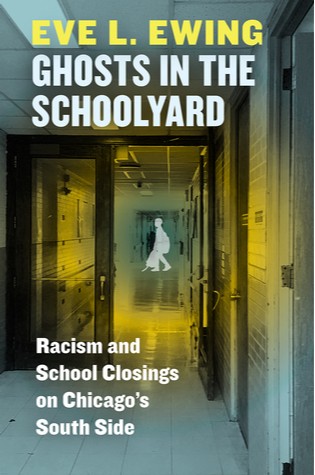
Lists It Appears On:
- Black Perspectives
- The Archive
“Failing schools. Underprivileged schools. Just plain bad schools.” That’s how Eve L. Ewing opens Ghosts in the Schoolyard: describing Chicago Public Schools from the outside. The way politicians and pundits and parents of kids who attend other schools talk about them, with a mix of pity and contempt. But Ewing knows Chicago Public Schools from the inside: as a student, then a teacher, and now a scholar who studies them. And that perspective has shown her that public schools are not buildings full of failures—they’re an integral part of their neighborhoods, at the heart of their communities, storehouses of history and memory that bring people together. Never was that role more apparent than in 2013 when Mayor Rahm Emanuel announced an unprecedented wave of school closings. Pitched simultaneously as a solution to a budget problem, a response to declining enrollments, and a chance to purge bad schools that were dragging down the whole system, the plan was met with a roar of protest from parents, students, and teachers. But if these schools were so bad, why did people care so much about keeping them open, to the point that some would even go on a hunger strike? Ewing’s answer begins with a story of systemic racism, inequality, bad faith, and distrust that stretches deep into Chicago history. Rooting her exploration in the historic African American neighborhood of Bronzeville, Ewing reveals that this issue is about much more than just schools. Black communities see the closing of their schools—schools that are certainly less than perfect but that are theirs—as one more in a long line of racist policies. The fight to keep them open is yet another front in the ongoing struggle of black people in America to build successful lives and achieve true self-determination.
24 .) God Save Texas: A Journey Into The Soul Of The Lone Star State written by Lawrence Wright
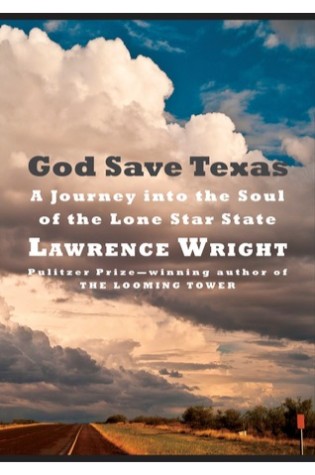
Lists It Appears On:
- Goodreads
- NPR
With humor and the biting insight of a native, the Pulitzer Prize-winning author of The Looming Tower explores the history, culture, and politics of Texas, while holding the stereotypes up for rigorous scrutiny. God Save Texas is a journey through the most controversial state in America. It is a red state in the heart of Trumpland that hasn’t elected a Democrat to a statewide office in more than twenty years; but it is also a state in which minorities already form a majority (including the largest number of Muslims). The cities are blue and among the most diverse in the nation. Oil is still king but Texas now leads California in technology exports. The Texas economic model of low taxes and minimal regulation has produced extraordinary growth but also striking income disparities. Texas looks a lot like the America that Donald Trump wants to create. And Wright’s profound portrait of the state not only reflects our country back as it is, but as it was and as it might be.
23 .) In the Hurricane’s Eye: The Genius of George Washington and the Victory at Yorktown written by Nathaniel Philbrick
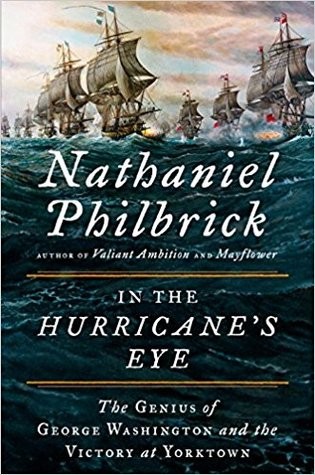
Lists It Appears On:
- Goodreads
- The Archive
The thrilling story of the Revolutionary War finale from the New York Times bestselling author of In the Heart of the Sea and Valiant Ambition. Here is the story of the remarkable year leading up to the siege of Yorktown. It sets Washington against his traitorous nemesis Benedict Arnold and places him in impossible situations and constant acrimonious negotiation with his French allies, along with his young protégé, the Marquis de Lafayette and his energetic general Nathanael Greene. In a narrative that moves from the ship-crowded waters off Newport, Rhode Island, to a wooded hillside near North Carolina’s Guilford Courthouse, to the Dutch storehouses on the Caribbean island of St. Eustatius, Philbrick narrates the pivotal naval battle that brought the end of America’s long, elusive path to independence. It was an improbable triumph made possible by Washington’s brilliant strategy, leadership, and revolutionary use of sea power. In the Hurricane’s Eye opens in the fall of 1780. For five years, American and British forces had clashed along the edge of a vast continent and were now at a stalemate. The Royal Navy, with its fleet of powerful warships (just one of which mounted more cannons than possessed by the entire rebel army), could attack the rebels’ seaside cities at will. The Rebels could just fall back inland and wait. Neither side could inflict the killing blow. As Washington knew better than anyone, only the French navy could break Britain’s stranglehold on the eastern seaboard and thus ensure an American victory. In the Battle of the Chesapeake (1781 – called the most important naval engagement in the history of the world), a French admiral foiled British attempts to rescue the army led by General Cornwallis. By making the subsequent victory at Yorktown a virtual inevitability, this naval battle–masterminded by Washington but waged without a single American ship–was largely responsible for the independence of the United States.
22 .) Into The Raging Sea: Thirty-Three Mariners, One Megastorm, And The Sinking Of El Faro written by Rachel Slade
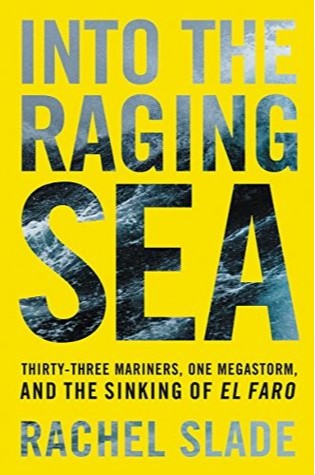
Lists It Appears On:
- NPR
- The New York Times
On October 1, 2015, Hurricane Joaquin barreled into the Bermuda Triangle and swallowed the container ship El Faro whole, resulting in the worst American shipping disaster in thirty-five years. No one could fathom how a vessel equipped with satellite communications, a sophisticated navigation system, and cutting-edge weather forecasting could suddenly vanish—until now. Relying on hundreds of exclusive interviews with family members and maritime experts, as well as the words of the crew members themselves—whose conversations were captured by the ship’s data recorder—journalist Rachel Slade unravels the mystery of the sinking of El Faro. As she recounts the final twenty-four hours onboard, Slade vividly depicts the officers’ anguish and fear as they struggled to carry out Captain Michael Davidson’s increasingly bizarre commands, which, they knew, would steer them straight into the eye of the storm. Taking a hard look at America’s aging merchant marine fleet, Slade also reveals the truth about modern shipping—a cut-throat industry plagued by razor-thin profits and ever more violent hurricanes fueled by global warming. A richly reported account of a singular tragedy, Into the Raging Sea takes us into the heart of an age-old American industry, casting new light on the hardworking men and women who paid the ultimate price in the name of profit.
21 .) Iran: A Modern History written by Abbas Amanat
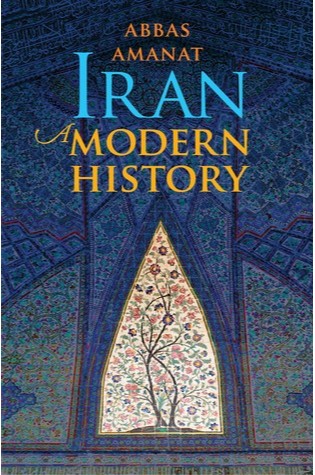
Lists It Appears On:
- Five Books
- History Today
This history of modern Iran is not a survey in the conventional sense, but an ambitious exploration of the nation that offers a revealing look at how events, people, and institutions are shaped by trends and currents that sometimes reach back hundreds of years. Abbas Amanat covers the dynasties, revolutions, civil wars, foreign occupation, and new Islamic regime of this complex period in history. Amanat combines chronological and thematic approaches, exploring events with lasting implications for modern Iran and the world. Drawing on the latest historical scholarship and emphasizing the twentieth century in its coverage, the book addresses debates about Iran’s culture and politics. Political history is the driving focus of this narrative based on decades of research and study, which is layered with discussions of literature, music, and the arts; ideology and religion; economy and society; and cultural identity and heritage.
20 .) Milk of Paradise: A History of Opium written by Lucy Inglis
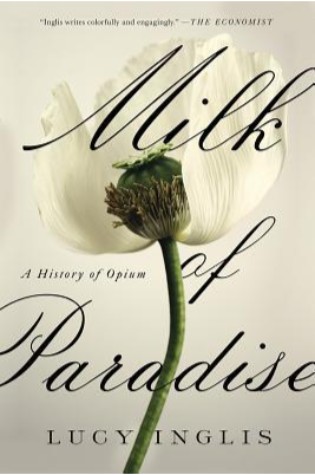
Lists It Appears On:
- Five Books
- History Today
Poppy tears, opium, heroin, fentanyl: humankind has been in thrall to the “Milk of Paradise” for millennia. The latex of papaver somniferum is a bringer of sleep, of pleasurable lethargy, of relief from pain—and hugely addictive. A commodity without rival, it is renewable, easy to extract, transport, and refine, and subject to an insatiable global demand. No other substance in the world is as simple to produce or as profitable. It is the basis of a gargantuan industry built upon a shady underworld, but ultimately it is an agricultural product that lives many lives before it reaches the branded blister packet, the intravenous drip, or the scorched and filthy spoon. Many of us will end our lives dependent on it. In Milk of Paradise, acclaimed cultural historian Lucy Inglis takes readers on an epic journey from ancient Mesopotamia to modern America and Afghanistan, from Sanskrit to pop, from poppy tears to smack, from morphine to today’s synthetic opiates. It is a tale of addiction, trade, crime, sex, war, literature, medicine, and, above all, money. And, as this ambitious, wide-ranging, and compelling account vividly shows, the history of opium is our history and it speaks to us of who we are.
19 .) On Desperate Ground: The Marines at The Reservoir, the Korean War’s Greatest Battle written by Hampton Sides
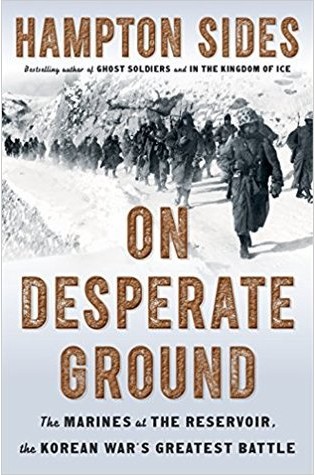
Lists It Appears On:
- Amazon
- The Archive
12 hrs 8 mins From the New York Times bestselling author of Ghost Soldiers and In the Kingdom of Ice, a chronicle of the extraordinary feats of heroism by Marines called on to do the impossible during the greatest battle of the Korean War On October 15, 1950, the vainglorious General Douglas MacArthur, Supreme Commander of U.N. troops in Korea, convinced President Harry Truman that the communist forces would be utterly defeated by Thanksgiving. The Chinese, he said with near certainty, would not intervene in the war. As he was speaking, 300,000 Chinese soldiers began crossing the border. Led by the 13,000 men of the 1st Marine Division, the Americans moved far north into the trap Mao had set for the arrogant MacArthur at the Chosin Reservoir. What followed was one of the most heroic – and harrowing – operations in American military history. Faced with annihilation, and temperatures plunging to 20 degrees below zero, the surrounded Marines fought through the enemy forces with ferocity, ingenuity and nearly unimaginable courage. Hampton Sides’s superb account of the battle relies on years of archival research and interviews with scores of Marines and Koreans who survived the siege. While expertly chronicling the follies of the American leaders, this is an immediate, grunt’s-eye view of history, enthralling in its narrative pace and powerful in its portrayal of what ordinary men are capable of in the most extreme circumstances.
18 .) One Person, No Vote: How Voter Suppression Is Destroying Our Democracy written by Carol Anderson
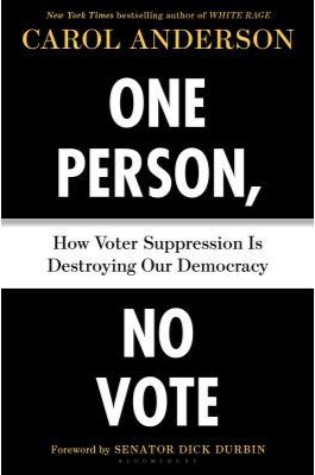
Lists It Appears On:
- Black Perspectives
- NPR
From the award-winning, New York Times bestselling author of White Rage, the startling–and timely–history of voter suppression in America, with a foreword by Senator Dick Durbin. In her New York Times bestseller White Rage, Carol Anderson laid bare an insidious history of policies that have systematically impeded black progress in America, from 1865 to our combustible present. With One Person, No Vote, she chronicles a related history: the rollbacks to African American participation in the vote since the 2013 Supreme Court decision that eviscerated the Voting Rights Act of 1965. Known as the Shelby ruling, this decision effectively allowed districts with a demonstrated history of racial discrimination to change voting requirements without approval from the Department of Justice. Focusing on the aftermath of Shelby, Anderson follows the astonishing story of government-dictated racial discrimination unfolding before our very eyes as more and more states adopt voter suppression laws. In gripping, enlightening detail she explains how voter suppression works, from photo ID requirements to gerrymandering to poll closures. And with vivid characters, she explores the resistance: the organizing, activism, and court battles to restore the basic right to vote to all Americans as the nation gears up for the 2018 midterm elections.
17 .) Rampage: MacArthur, Yamashita, and the Battle of Manila written by James M. Scott
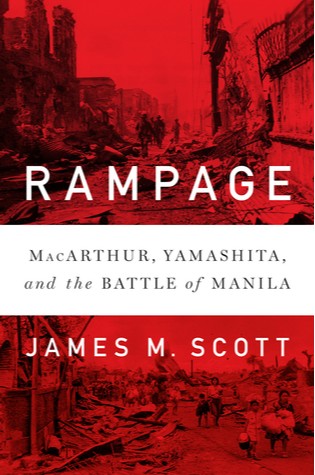
Lists It Appears On:
- Amazon
- Kirkus
Before World War II, Manila was a slice of America in Asia, populated with elegant neoclassical buildings, spacious parks, and home to thousands of U.S. servicemen and business executives who enjoyed the relaxed pace of the tropics. The outbreak of the war, however, brought an end to the good life. General Douglas MacArthur, hoping to protect the Pearl of the Orient, declared the Philippine capital an open city and evacuated his forces. The Japanese seized Manila on January 2, 1942, rounding up and interning thousands of Americans. MacArthur, who escaped soon after to Australia, famously vowed to return. For nearly three years, he clawed his way north, obsessed with redeeming his promise and turning his earlier defeat into victory. By early 1945, he prepared to liberate Manila, a city whose residents by then faced widespread starvation. Convinced the Japanese would abandon the city as he did, MacArthur planned a victory parade down Dewey Boulevard. But the enemy had other plans. Determined to fight to the death, Japanese marines barricaded intersections, converted buildings into fortresses, and booby-trapped stores, graveyards, and even dead bodies. The twenty-nine-day battle to liberate Manila resulted in the catastrophic destruction of the city and a rampage by Japanese forces that brutalized the civilian population. Landmarks were demolished, houses were torched, suspected resistance fighters were tortured and killed, countless women were raped, and their husbands and children were murdered. American troops had no choice but to battle the enemy, floor by floor and even room by room, through schools, hospitals, and even sports stadiums.
16 .) Set the World on Fire: Black Nationalist Women and the Global Struggle for Freedom written by Keisha N. Blain
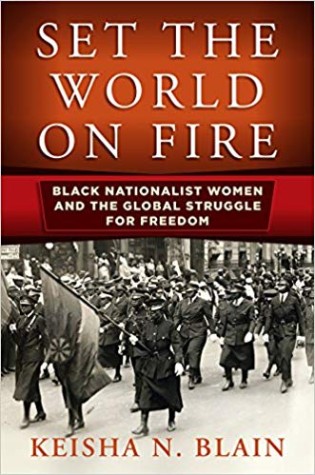
Lists It Appears On:
- Black Perspectives
- Smithsonian
In 1932, Mittie Maude Lena Gordon spoke to a crowd of black Chicagoans at the old Jack Johnson boxing ring, rallying their support for emigration to West Africa. In 1937, Celia Jane Allen traveled to Jim Crow Mississippi to organize rural black workers around black nationalist causes. In the late 1940s, from her home in Kingston, Jamaica, Amy Jacques Garvey launched an extensive letter-writing campaign to defend the Greater Liberia Bill, which would relocate 13 million black Americans to West Africa.
15 .) The Age of Eisenhower: America and the World in the 1950s written by William I. Hitchcock
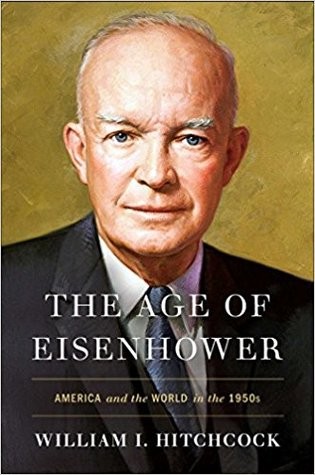
Lists It Appears On:
- Amazon
- Simon And Shuster
An original and penetrating assessment of President Dwight D. Eisenhower, showing Ike’s enormous influence on modern America, the Cold War, and on the presidency itself. In a 2017 survey, presidential historians ranked Dwight D. Eisenhower fifth on the list of great presidents, behind the perennial top four: Lincoln, Washington, Franklin D. Roosevelt, and Teddy Roosevelt. Historian William Hitchcock shows that this high ranking is justified. Eisenhower’s accomplishments were enormous, and loom ever larger from the vantage point of our own tumultuous times. A former general, Ike kept the peace: he ended the Korean War, avoided a war in Vietnam, adroitly managed a potential confrontation with China, and soothed relations with the Soviet Union after Stalin’s death. He guided the Republican Party to embrace central aspects of the New Deal like Social Security. He thwarted the demagoguery of McCarthy and he advanced the agenda of civil rights for African Americans. As part of his strategy to wage, and win, the Cold War, Eisenhower expanded American military power, built a fearsome nuclear arsenal and launched the space race. In his famous Farewell Address, he acknowledged that Americans needed such weapons in order to keep global peace—but he also admonished his citizens to remain alert to the potentially harmful influence of the “military-industrial complex.” From 1953 to 1961 no one dominated the world stage as did President Dwight D. Eisenhower. The Age of Eisenhower is the definitive account of this presidency, drawing extensively on declassified material from the Eisenhower Library, the CIA and Defense Department, and troves of unpublished documents. In his masterful account, Hitchcock shows how Ike shaped modern America, and he astutely assesses Eisenhower’s close confidants, from Attorney General Brownell to Secretary of State Dulles.
14 .) The Library Book written by Susan Orlean
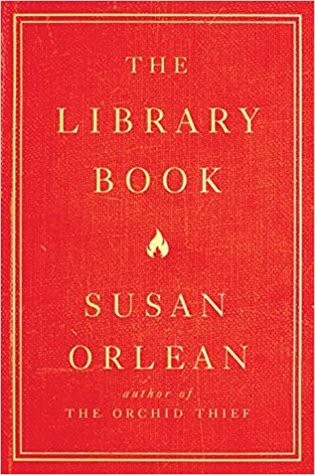
Lists It Appears On:
- NPR
- The New York Times
On the morning of April 28, 1986, a fire alarm sounded in the Los Angeles Public Library. As the moments passed, the patrons and staff who had been cleared out of the building realized this was not the usual fire alarm. As one fireman recounted, “Once that first stack got going, it was ‘Goodbye, Charlie.’” The fire was disastrous: it reached 2000 degrees and burned for more than seven hours. By the time it was extinguished, it had consumed four hundred thousand books and damaged seven hundred thousand more. Investigators descended on the scene, but more than thirty years later, the mystery remains: Did someone purposefully set fire to the library—and if so, who? Weaving her lifelong love of books and reading into an investigation of the fire, award-winning New Yorker reporter and New York Times bestselling author Susan Orlean delivers a mesmerizing and uniquely compelling book that manages to tell the broader story of libraries and librarians in a way that has never been done before. In The Library Book, Orlean chronicles the LAPL fire and its aftermath to showcase the larger, crucial role that libraries play in our lives; delves into the evolution of libraries across the country and around the world, from their humble beginnings as a metropolitan charitable initiative to their current status as a cornerstone of national identity; brings each department of the library to vivid life through on-the-ground reporting; studies arson and attempts to burn a copy of a book herself; reflects on her own experiences in libraries; and reexamines the case of Harry Peak, the blond-haired actor long suspected of setting fire to the LAPL more than thirty years ago.
13 .) The New Silk Roads: the Present and Future of the World written by Peter Frankopan
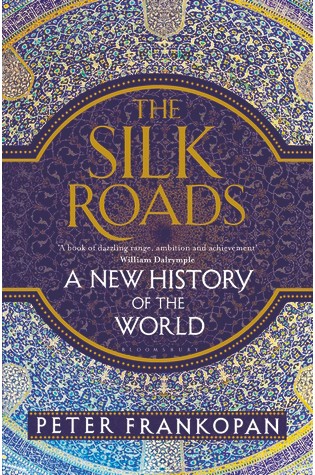
Lists It Appears On:
- History Today
- Prospect
The No. 1 Sunday Times and international bestseller – a major reassessment of world history in light of the economic and political renaissance in the re-emerging east. ‘Magnificent’ Sunday Times ‘Immensely entertaining … so ambitious, so detailed, so fascinating’ The Times For centuries, fame and fortune were to be found in the west – in the New World of the Americas. Today, it is the east which calls out to those in search of riches and adventure. Sweeping right across Central Asia and deep into China and India, a region that once took centre stage is again rising to dominate global politics, commerce and culture. A major reassessment of world history, The Silk Roads is a dazzling exploration of the forces that have driven the rise and fall of empires, determined the flow of ideas and goods and are now heralding a new dawn in international affairs.
12 .) The Poison Squad written by DEBORAH BLUM
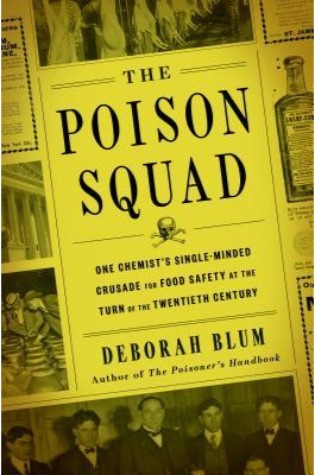
Lists It Appears On:
- The Archive
- The New York Times
A New York Times Notable Book From Pulitzer Prize winner and New York Times-bestselling author Deborah Blum, the dramatic true story of how food was made safe in the United States and the heroes, led by the inimitable Dr. Harvey Washington Wiley, who fought for change By the end of nineteenth century, food was dangerous. Lethal, even. “Milk” might contain formaldehyde, most often used to embalm corpses. Decaying meat was preserved with both salicylic acid, a pharmaceutical chemical, and borax, a compound first identified as a cleaning product. This was not by accident; food manufacturers had rushed to embrace the rise of industrial chemistry, and were knowingly selling harmful products. Unchecked by government regulation, basic safety, or even labelling requirements, they put profit before the health of their customers. By some estimates, in New York City alone, thousands of children were killed by “embalmed milk” every year. Citizens–activists, journalists, scientists, and women’s groups–began agitating for change. But even as protective measures were enacted in Europe, American corporations blocked even modest regulations. Then, in 1883, Dr. Harvey Washington Wiley, a chemistry professor from Purdue University, was named chief chemist of the agriculture department, and the agency began methodically investigating food and drink fraud, even conducting shocking human tests on groups of young men who came to be known as, “The Poison Squad.” Over the next thirty years, a titanic struggle took place, with the courageous and fascinating Dr. Wiley campaigning indefatigably for food safety and consumer protection. Together with a gallant cast, including the muckraking reporter Upton Sinclair, whose fiction revealed the horrific truth about the Chicago stockyards; Fannie Farmer, then the most famous cookbook author in the country; and Henry J. Heinz, one of the few food producers who actively advocated for pure food, Dr. Wiley changed history. When the landmark 1906 Food and Drug Act was finally passed, it was known across the land, as “Dr. Wiley’s Law.”
11 .) The Soul Of America: The Battle For Our Better Angels written by Jon Meacham
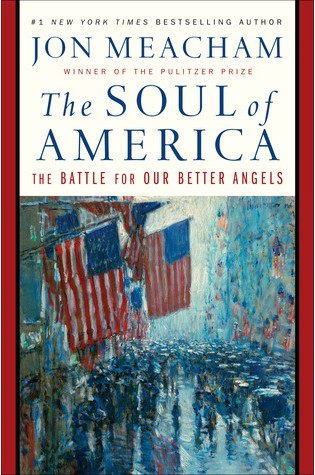
Lists It Appears On:
- Goodreads
- NPR
Pulitzer Prize-winning author Jon Meacham helps us understand the present moment in American politics and life by looking back at critical times in our history when hope overcame division and fear. Our current climate of partisan fury is not new, and in The Soul of America Meacham shows us how what Abraham Lincoln called the “better angels of our nature” have repeatedly won the day. Painting surprising portraits of Lincoln and other presidents, including Ulysses S. Grant, Theodore Roosevelt, Woodrow Wilson, Franklin D. Roosevelt, Harry S. Truman, Dwight Eisenhower, and Lyndon B. Johnson, and illuminating the courage of such influential citizen activists as Martin Luther King Jr., early suffragettes Alice Paul and Carrie Chapman Catt, civil rights pioneers Rosa Parks and John Lewis, First Lady Eleanor Roosevelt, and Army-McCarthy hearings lawyer Joseph N. Welch, Meacham brings vividly to life turning points in American history. He writes about the Civil War, Reconstruction, and the birth of the Lost Cause; the backlash against immigrants in the First World War and the resurgence of the Ku Klux Klan in the 1920s; the fight for women’s rights; the demagoguery of Huey Long and Father Coughlin and the isolationist work of America First in the years before World War II; the anti-Communist witch hunts led by Senator Joseph McCarthy; and Lyndon Johnson’s crusade against Jim Crow.
10 .) We the Corporations written by ADAM WINKLER
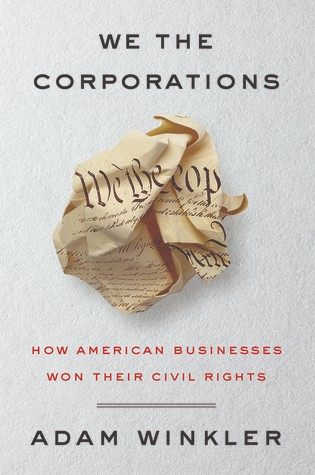
Lists It Appears On:
- The Archive
- The New York Times
We the Corporations chronicles the astonishing story of one of the most successful yet least well-known “civil rights movements” in American history. Hardly oppressed like women and minorities, business corporations, too, have fought since the nation’s earliest days to gain equal rights under the Constitution—and today have nearly all the same rights as ordinary people. Exposing the historical origins of Citizens United and Hobby Lobby, Adam Winkler explains how those controversial Supreme Court decisions extending free speech and religious liberty to corporations were the capstone of a centuries-long struggle over corporate personhood and constitutional protections for business. Beginning his account in the colonial era, Winkler reveals the profound influence corporations had on the birth of democracy and on the shape of the Constitution itself. Once the Constitution was ratified, corporations quickly sought to gain the rights it guaranteed. The first Supreme Court case on the rights of corporations was decided in 1809, a half-century before the first comparable cases on the rights of African Americans or women. Ever since corporations have waged a persistent and remarkably fruitful campaign to win an ever-greater share of individual rights. Although corporations never marched on Washington, they employed many of the same strategies of more familiar civil rights struggles: civil disobedience, test cases, and novel legal claims made in a purposeful effort to reshape the law. Indeed, corporations have often been unheralded innovators in constitutional law, and several of the individual rights Americans hold most dear were first secured in lawsuits brought by businesses.
9 .) Barracoon: The Story Of The Last “Black Cargo” written by Zora Neale Hurston
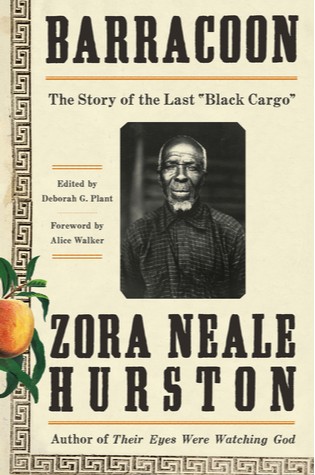
Lists It Appears On:
- Amazon
- Goodreads
- NPR
In 1927, Zora Neale Hurston went to Plateau, Alabama, just outside Mobile, to interview eighty-six-year-old Cudjo Lewis. Of the millions of men, women, and children transported from Africa to America as slaves, Cudjo was then the only person alive to tell the story of this integral part of the nation’s history. Hurston was there to record Cudjo’s firsthand account of the raid that led to his capture and bondage fifty years after the Atlantic slave trade was outlawed in the United States. In 1931, Hurston returned to Plateau, the African-centric community three miles from Mobile founded by Cudjo and other former slaves from his ship. Spending more than three months there, she talked in depth with Cudjo about the details of his life. During those weeks, the young writer and the elderly formerly enslaved man ate peaches and watermelon that grew in the backyard and talked about Cudjo’s past–memories from his childhood in Africa, the horrors of being captured and held in a barracoon for selection by American slavers, the harrowing experience of the Middle Passage packed with more than 100 other souls aboard the Clotilda, and the years he spent in slavery until the end of the Civil War. Based on those interviews, featuring Cudjo’s unique vernacular, and written from Hurston’s perspective with the compassion and singular style that have made her one of the preeminent American authors of the twentieth-century, Barracoon masterfully illustrates the tragedy of slavery and of one life forever defined by it. Offering insight into the pernicious legacy that continues to haunt us all, black and white, this poignant and powerful work is an invaluable contribution to our shared history and culture.
8 .) Beneath A Ruthless Sun: A True Story Of Violence, Race, And Justice Lost And Found written by Gilbert King
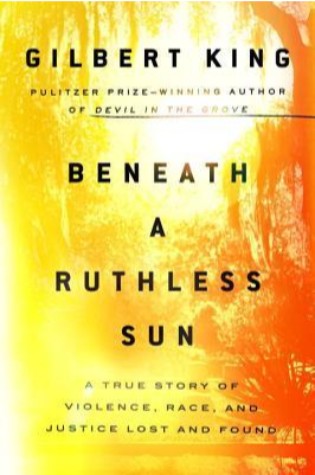
Lists It Appears On:
- NPR
- Smithsonian
- The Archive
From the author of the Pulitzer Prize-winning bestseller Devil in the Grove, the gripping true story of a small town with a big secret. In December 1957, the wife of a Florida citrus baron is raped in her home while her husband is away. She claims a “husky Negro” did it, and the sheriff, the infamous racist Willis McCall, does not hesitate to round up a herd of suspects. But within days, McCall turns his sights on Jesse Daniels, a gentle, mentally impaired white nineteen-year-old. Soon Jesse is railroaded up to the state hospital for the insane, and locked away without trial. But crusading journalist Mabel Norris Reese cannot stop fretting over the case and its baffling outcome. Who was protecting whom, or what? She pursues the story for years, chasing down leads, hitting dead ends, winning unlikely allies. Bit by bit, the unspeakable truths behind a conspiracy that shocked a community into silence begin to surface. Beneath a Ruthless Sun tells a powerful, page-turning story rooted in the fears that rippled through the South as integration began to take hold, sparking a surge of virulent racism that savaged the vulnerable, debased the powerful, and roils our own times still.
7 .) Boom Town: The Fantastical Saga Of Oklahoma City, Its Chaotic Founding, Its Apocalyptic Weather, Its Purloined Basketball Team, And The Dream Of Becoming A World-Class Metropolis written by Sam Anderson
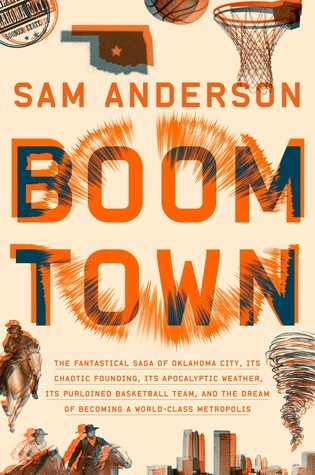
Lists It Appears On:
- Goodreads
- NPR
- The New York Times
Award-winning journalist Sam Anderson’s long-awaited debut is a brilliant, kaleidoscopic narrative of Oklahoma City–a great American story of civics, basketball, and destiny. Oklahoma City was born from chaos. It was founded in a bizarre but momentous “Land Run” in 1889, when thousands of people lined up along the borders of Oklahoma Territory and rushed in at noon to stake their claims. Since then, it has been a city torn between the wild energy that drives its outsized ambitions, and the forces of order that seek sustainable progress. Nowhere was this dynamic better realized than in the drama of the Oklahoma City Thunder basketball team’s 2012-13 season, when the Thunder’s brilliant general manager, Sam Presti, ignited a firestorm by trading future superstar James Harden just days before the first game. Presti’s all-in gamble on “the Process”—the patient, methodical management style that dictated the trade as the team’s best hope for long-term greatness—kicked off a pivotal year in the city’s history, one that would include pitched battles over urban planning, a series of cataclysmic tornadoes, and the frenzied hope that an NBA championship might finally deliver the glory of which the city had always dreamed. Boom Town announces the arrival of an exciting literary voice.
6 .) Fly Girls: How Five Daring Women Defied All Odds and Made Aviation History written by KEITH O’BRIEN
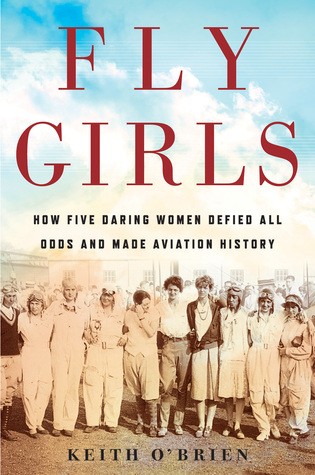
Lists It Appears On:
- Amazon
- Goodreads
- The New York Times
The untold story of five women who fought to compete against men in the high-stakes national air races of the 1920s and 1930s — and won Between the world wars, no sport was more popular, or more dangerous, than airplane racing. Thousands of fans flocked to multi‑day events, and cities vied with one another to host them. The pilots themselves were hailed as dashing heroes who cheerfully stared death in the face. Well, the men were hailed. Female pilots were more often ridiculed than praised for what the press portrayed as silly efforts to horn in on a manly, and deadly, pursuit. Fly Girls recounts how a cadre of women banded together to break the original glass ceiling: the entrenched prejudice that conspired to keep them out of the sky. O’Brien weaves together the stories of five remarkable women: Florence Klingensmith, a high‑school dropout who worked for a dry cleaner in Fargo, North Dakota; Ruth Elder, an Alabama divorcee; Amelia Earhart, the most famous, but not necessarily the most skilled; Ruth Nichols, who chafed at the constraints of her blue‑blood family’s expectations; and Louise Thaden, the mother of two young kids who got her start selling coal in Wichita. Together, they fought for the chance to race against the men — and in 1936 one of them would triumph in the toughest race of all. Like Hidden Figures and Girls of Atomic City, Fly Girls celebrates a little-known slice of history in which tenacious, trail-blazing women braved all obstacles to achieve greatness.
5 .) The Field Of Blood: Violence In Congress And The Road To Civil War written by Joanne B. Freeman
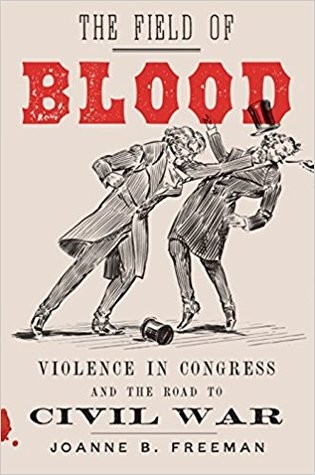
Lists It Appears On:
- NPR
- Smithsonian
- The Archive
- The New York Times
The previously untold story of the violence in Congress that helped spark the Civil War In The Field of Blood, Joanne Freeman recovers the long-lost story of physical violence on the floor of the U.S. Congress. Drawing on an extraordinary range of sources, Freeman shows that the Capitol was rife with conflict in the decades before the Civil War. Legislative sessions often were punctuated with mortal threats, canings, flipped desks, and all-out slugfests. When debate broke down, congressmen drew pistols and waved Bowie knives. One representative even killed another in a duel. Many were beaten and bullied in an attempt to intimidate them into compliance, particularly on the issue of slavery. These fights didn’t happen in a vacuum. Freeman’s dramatic accounts of brawls and thrashings tell a larger story of how fisticuffs and journalism, and the powerful emotions they elicited, raised tensions between North and South and led toward war. In the process, she brings the antebellum Congress to life, revealing its rough realities–the feel, sense, and sound of it–as well as its nation-shaping import. Funny, tragic, and rivetingly told, The Field of Blood offers a front-row view of congressional mayhem, and sheds new light on the careers of John Quincy Adams, Henry Clay, and other luminaries, as well as introducing a host of lesser-known but no less fascinating men. The result is a fresh understanding of the workings of American democracy and the bonds of Union on the eve of their greatest peril.
4 .) Frederick Douglass: Prophet of Freedom written by David W. Blight
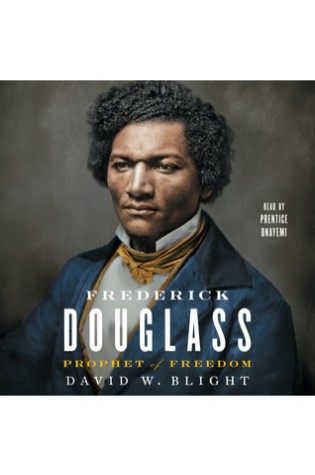
Lists It Appears On:
- Amazon
- Black Perspectives
- History Today
- Simon And Shuster
- The New York Times
36 Hours The definitive, dramatic biography of the most important African-American of the nineteenth century: Frederick Douglass, the escaped slave who became the greatest orator of his day and one of the leading abolitionists and writers of the era. As a young man, Frederick Douglass (1818-1895) escaped from slavery in Baltimore, Maryland. He was fortunate to have been taught to read by his slave owner mistress, and he would go on to become one of the major literary figures of his time. He wrote three versions of his autobiography over the course of his lifetime and published his own newspaper. His very existence gave the lie to slave owners: with dignity and great intelligence he bore witness to the brutality of slavery. Initially mentored by William Lloyd Garrison, Douglass spoke widely, often to large crowds, using his own story to condemn slavery. He broke with Garrison to become a political abolitionist, a Republican, and eventually a Lincoln supporter. By the Civil War and during Reconstruction, Douglass became the most famed and widely traveled orator in the nation. He denounced the premature end of Reconstruction and the emerging Jim Crow era. In his unique and eloquent voice, written and spoken, Douglass was a fierce critic of the United States as well as a radical patriot. He sometimes argued politically with younger African-Americans, but he never forsook either the Republican party or the cause of black civil and political rights. In this remarkable biography, David Blight has drawn on new information held in a private collection that few other historian have consulted, as well as recently discovered issues of Douglass’ newspapers. Blight tells the fascinating story of Douglass’s two marriages and his complex extended family. Douglass was not only an astonishing man of words, but a thinker steeped in Biblical story and theology.
3 .) Leadership: In Turbulent Times written by Doris Kearns Goodwin
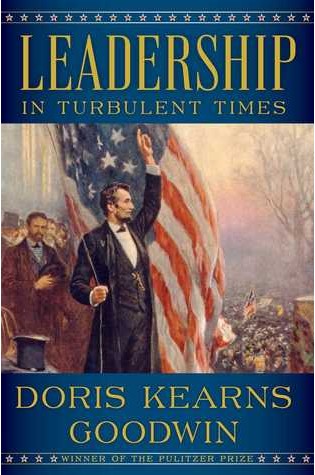
Lists It Appears On:
- Amazon
- Goodreads
- NPR
- Simon And Shuster
- The Archive
Are leaders born or made? Where does ambition come from? How does adversity affect the growth of leadership? Does the leader make the times or do the times make the leader? In Leadership, Goodwin draws upon the four presidents she has studied most closely—Abraham Lincoln, Theodore Roosevelt, Franklin D. Roosevelt, and Lyndon B. Johnson (in civil rights)—to show how they recognized leadership qualities within themselves and were recognized as leaders by others. By looking back to their first entries into public life, we encounter them at a time when their paths were filled with confusion, fear, and hope. Leadership tells the story of how they all collided with dramatic reversals that disrupted their lives and threatened to shatter forever their ambitions. Nonetheless, they all emerged fitted to confront the contours and dilemmas of their times. No common pattern describes the trajectory of leadership. Although set apart in background, abilities, and temperament, these men shared a fierce ambition and a deep-seated resilience that enabled them to surmount uncommon hardships. At their best, all four were guided by a sense of moral purpose. At moments of great challenge, they were able to summon their talents to enlarge the opportunities and lives of others.
2 .) Indianapolis: The True Story Of The Worst Sea Disaster In U.S. Naval History And The Fifty-Year Fight To Exonerate An Innocent Man written by Lynn Vincent and Sara Vladic
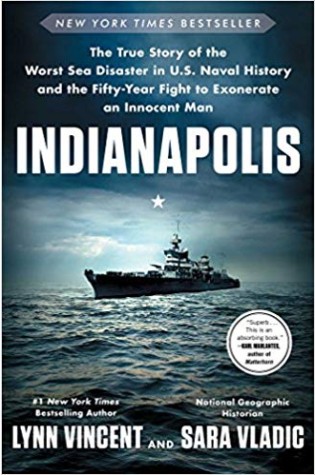
Lists It Appears On:
- Amazon
- Goodreads
- Kirkus
- NPR
- Simon And Shuster
- The Archive
Just after midnight on July 30, 1945, days after delivering the components of the atomic bomb from California to the Pacific Islands in the most highly classified naval mission of the war, USS Indianapolis is sailing alone in the center of the Philippine Sea when she is struck by two Japanese torpedoes. The ship is instantly transformed into a fiery cauldron and sinks within minutes. Some 300 men go down with the ship. Nearly 900 make it into the water alive. For the next five nights and four days, almost three hundred miles from the nearest land, the men battle injuries, sharks, dehydration, insanity, and eventually each other. Only 316 will survive.
1 .) These Truths: A History Of The United States written by Jill Lepore
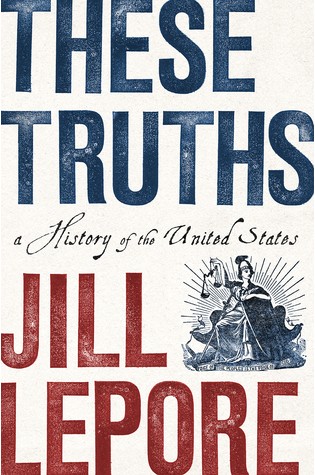
Lists It Appears On:
- Amazon
- Goodreads
- Kirkus
- NPR
- The Archive
- The New York Times
In the most ambitious one-volume American history in decades, award-winning historian and New Yorker writer Jill Lepore offers a magisterial account of the origins and rise of a divided nation, an urgently needed reckoning with the beauty and tragedy of American history. Written in elegiac prose, Lepore’s groundbreaking investigation places truth itself—a devotion to facts, proof, and evidence—at the center of the nation’s history. The American experiment rests on three ideas—”these truths,” Jefferson called them—political equality, natural rights, and the sovereignty of the people. And it rests, too, on a fearless dedication to inquiry, Lepore argues, because self-government depends on it. But has the nation, and democracy itself, delivered on that promise? These Truths tells this uniquely American story, beginning in 1492, asking whether the course of events over more than five centuries has proven the nation’s truths, or belied them. To answer that question, Lepore traces the intertwined histories of American politics, law, journalism, and technology, from the colonial town meeting to the nineteenth-century party machine, from talk radio to twenty-first-century Internet polls, from Magna Carta to the Patriot Act, from the printing press to Facebook News. Along the way, Lepore’s sovereign chronicle is filled with arresting sketches of both well-known and lesser-known Americans, from a parade of presidents and a rogues’ gallery of political mischief makers to the intrepid leaders of protest movements, including Frederick Douglass, the famed abolitionist orator; William Jennings Bryan, the three-time presidential candidate and ultimately tragic populist; Pauli Murray, the visionary civil rights strategist; and Phyllis Schlafly, the uncredited architect of modern conservatism.
The 100+ Additional Best History Books Of 2018
| # | Books | Authors | Lists |
| 33 | 1947: Where Now Begins | Elisabeth Åsbrink, translated | NPR |
| 34 | A Certain Idea of France | Prospect | |
| 35 | A Cruelty Special To Our Species: Poems | Emily Jungmin Yoon | NPR |
| 36 | A Hard Rain: America In The 1960s, Our Decade Of Hope, Possibility, And Innocence Lost | Frye Gaillard | NPR |
| 37 | A Life Of My Own: A Memoir | Claire Tomalin | NPR |
| 38 | A Magnificent Faith: Art and Identity in Lutheran Germany | History Today | |
| 39 | A More Beautiful and Terrible History: The Uses and Misuses of Civil Rights History | Jeanne Theoharis | Black Perspectives |
| 40 | A Political Education: Black Politics and Education Reform in Chicago Since the 1960s | Elizabeth Todd-Breland | Black Perspectives |
| 41 | African Americans and the Pacific War, 1941-1954 | Chris Dixon | Black Perspectives |
| 42 | African Kings and Black Slaves: Sovereignty and Dispossession in the Early Modern Atlantic | Herman L. Bennett | Black Perspectives |
| 43 | All The Answers | Michael Kupperman | NPR |
| 44 | American Dialogue: The Founders and Us | JOSEPH J. ELLIS | The New York Times |
| 45 | Arnhem | Prospect | |
| 46 | BARONS OF THE SEA | Simon And Shuster | |
| 47 | Being Muslim: A Cultural History of Women of Color in American Islam | Sylvia Chan-Malik | Black Perspectives |
| 48 | Belonging: A German Reckons With History And Home | Nora Krug | NPR |
| 49 | Big Week: The Biggest Air Battle of World War II | Amazon | |
| 50 | Birthright Citizens: A History of Race and Rights in Antebellum America | Martha Jones | Black Perspectives |
| 51 | Bringing Down the Colonel: A Sex Scandal of the Gilded Age, and the “Powerless” Woman Who Took On Washington | Smithsonian | |
| 52 | Broad Sympathies in a Narrow World: The Legacy of W. E. B. Du Bois | Sandra Staton-Taiwo | Black Perspectives |
| 53 | Building Anglo-Saxon England | History Today | |
| 54 | Captive’s Quest for Freedom: Fugitive Slaves, the 1850 Fugitive Slave Law, and the Politics of Slavery | R.J.M. Blackett | Black Perspectives |
| 55 | Che: A Revolutionary Life | Jon Lee Anderson, illustrated | NPR |
| 56 | CITY OF A MILLION DREAMS: A HISTORY OF NEW ORLEANS AT YEAR 300 | Kirkus | |
| 57 | Contact High: A Visual History Of Hip-Hop | Vikki Tobak | NPR |
| 58 | Dancing Bears: True Stories Of People Nostalgic For Life Under Tyranny | Witold Szablowski, translated | NPR |
| 59 | Death in Ten Minutes: Kitty Marion – Activist. Arsonist. Suffragette | History Today | |
| 60 | Death Of A Rainmaker: A Dust Bowl Mystery | Laurie Loewenstein | NPR |
| 61 | Deviation: A Novel | Luce D’Eramo, translated | NPR |
| 62 | Disciplining the Empire: Politics, Governance, and the Rise of the British Navy | History Today | |
| 63 | Displacing Blackness: Planning, Power, and Race in Twentieth–Century Halifax | Ted Rutland | Black Perspectives |
| 64 | Dockworker Power: Race and Activism in Durban and the San Francisco Bay Area | Peter Cole | Black Perspectives |
| 65 | Dominion: The Christian Revolution and its Aftershocks | History Today | |
| 66 | Dragon Lords: the History and Legends of Viking England | History Today | |
| 67 | Dreams of Germany: Musical Imaginaries from the Concert Hall to the Dance Floor | History Today | |
| 68 | Empire of Guns: The Violent Making of the Industrial Revolution | Smithsonian | |
| 69 | Empress | Prospect | |
| 70 | Enlightenment Now: The Case For Reason, Science, Humanism, And Progress | Steven Pinker | NPR |
| 71 | Exit Stage Left: The Snagglepuss Chronicles | Mark Russell, illustrated | NPR |
| 72 | Fatal Discord: Erasmus, Luther and the Fight for the Western Mind | MICHAEL MASSING | The New York Times |
| 73 | Fear: Trump In The White House | Bob Woodward | NPR |
| 74 | History Today | History Today | |
| 75 | House of Dreams: The Life of L. M. Montgomery | Goodreads | |
| 76 | Inner City Pressure: The Story Of Grime | Dan Hancox | NPR |
| 77 | Inseparable: The Original Siamese Twins And Their Rendezvous With American History | Yunte Huang | NPR |
| 78 | Invisible Agents: Women and Espionage in Seventeenth-Century Britain | Nadine Akkerman | Five Books |
| 79 | Jefferson’s Daughters: Three Sisters, White and Black, in a Young America | Goodreads | |
| 80 | Killers of the Flower Moon: The Osage Murders and the Making of the FBI | History Today | |
| 81 | Landscapes of Freedom: Building a Postemancipation Society in the Rainforests of Western Colombia | Claudia Leal | Black Perspectives |
| 82 | Lincoln’s Last Trial: The Murder Case That Propelled Him to the Presidency | Goodreads | |
| 83 | Little: A Novel | Edward Carey | NPR |
| 84 | Lords of the Desert: Britain’s Struggle with America to Dominate the Middle East | History Today | |
| 85 | Lost Kingdom: the Quest for Empire and the Making of the Russian Nation from 1470 to the Present | History Today | |
| 86 | Making All Black Lives Matter: Reimagining Freedom in the Twenty-First Century | Barbara Ransby | Black Perspectives |
| 87 | May We Forever Stand: A History of the Black National Anthem | Imani Perry | Black Perspectives |
| 88 | Memphis Rent Party: The Blues, Rock & Soul In Music’s Hometown | Robert Gordon | NPR |
| 89 | Midden | Julia Bouwsma | NPR |
| 90 | Monument: Poems New And Selected | Natasha Trethewey | NPR |
| 91 | Night Moves | Jessica Hopper | NPR |
| 92 | Origin Story: A Big History of Everything | Goodreads | |
| 93 | Our Boys | Prospect | |
| 94 | Our Towns: A 100,000-Mile Journey into the Heart of America | Amazon | |
| 95 | Power, Pleasure, and Profit: Insatiable Appetites from Machiavelli to Madison | David Wootton | Five Books |
| 96 | Presidents of War | Amazon | |
| 97 | Race Women Internationalists: Activist-Intellectuals and Global Freedom Struggles | Imaobong D. Umoren | Black Perspectives |
| 98 | Rise and Kill First: The Inside Story and Secret Operations of Israel’s Assassination Program | Goodreads | |
| 99 | Rise Up, Women! | Prospect | |
| 100 | Robin | Goodreads | |
| 101 | Rocket Men: The Daring Odyssey of Apollo 8 and the Astronauts Who Made Man’s First Journey to the Moon | Goodreads | |
| 102 | Roller-Coaster: Europe, 1950-2017 | Prospect | |
| 103 | ROME | Simon And Shuster | |
| 104 | Russia’s Turn to Persia: Orientalism in Diplomacy and Intelligence | History Today | |
| 105 | Sexuality and Slavery: Reclaiming Intimate Histories in the Americas | Daina Ramey Berry and Leslie Harris | Black Perspectives |
| 106 | Sharp | Michelle Dean | NPR |
| 107 | She Begat This: 20 Years Of The Miseducation Of Lauryn Hill | Joan Morgan | NPR |
| 108 | SMOKETOWN | Simon And Shuster | |
| 109 | Stealing The Show: How Women Are Revolutionizing Television | Joy Press | NPR |
| 110 | Terra Nullius: A Novel | Claire G. Coleman | NPR |
| 111 | The Apocalypse of Settler Colonialism: The Roots of Slavery, White Supremacy, and Capitalism in 17th Century North America and the Caribbean | Gerald Horne | Black Perspectives |
| 112 | The Artful Evolution Of Hal & Mal’s | Malcolm White, illustrated | NPR |
| 113 | The Best of Times, the Worst of Times: a History of the Present | History Today | |
| 114 | The Bone and Sinew of the Land: America’s Forgotten Black Pioneers and the Struggle for Equality | Smithsonian | |
| 115 | The Catalogue of Shipwrecked Books | History Today | |
| 116 | The Common Wind: Afro-American Currents in the Age of the Haitian Revolution | Julius S. Scott | Black Perspectives |
| 117 | The Court Dancer: A Novel | Kyung-Sook Shin, translated | NPR |
| 118 | The Darkening Age: The Christian Destruction of the Classical World | CATHERINE NIXEY | The New York Times |
| 119 | THE DEBATABLE LAND: THE LOST WORLD BETWEEN SCOTLAND AND ENGLAND | Kirkus | |
| 120 | THE ESCAPE ARTISTS: A BAND OF DAREDEVIL PILOTS AND THE GREATEST PRISON BREAK OF THE GREAT WAR | Kirkus | |
| 121 | The Faithful Spy: Dietrich Bonhoeffer And The Plot To Kill Hitler | John Hendrix | NPR |
| 122 | The Fifth Risk | Amazon | |
| 123 | THE FIGHTERS | Simon And Shuster | |
| 124 | The Golden Thread: How Fabric Changed History | History Today | |
| 125 | The Good Neighbor: The Life and Work of Fred Rogers | Goodreads | |
| 126 | The Great Believers | Rebecca Makkai | NPR |
| 127 | The Hellfire Club | Jake Tapper | NPR |
| 128 | The History of the Emotions | History Today | |
| 129 | The Invention of Race in the European Middle Ages | History Today | |
| 130 | The Man in the Glass House: Philip Johnson, Architect of the Modern Century | Smithsonian | |
| 131 | The Mirage Factory: Illusion, Imagination, And The Invention Of Los Angeles | Gary Krist | NPR |
| 132 | The Monk of Mokha | Goodreads | |
| 133 | The Most Dangerous Man In America: Timothy Leary, Richard Nixon And The Hunt For The Fugitive King Of LSD | Bill Minutaglio and Steven L. Davis | NPR |
| 134 | The New Negro: The Life of Alain Locke | Jeffrey C. Stewart | Black Perspectives |
| 135 | The Night Diary | Veera Hiranandani | NPR |
| 136 | The Odyssey | History Today | |
| 137 | The Order Of The Day | Éric Vuillard, translated | NPR |
| 138 | The Parker Inheritance | Varian Johnson | NPR |
| 139 | The Personality Brokers: The Strange History Of Myers-Briggs And The Birth Of Personality Testing | Merve Emre | NPR |
| 140 | The Prison Letters Of Nelson Mandela | Nelson Mandela, Sahm Venter (editor) | NPR |
| 141 | The Qur’an & the Bible | History Today | |
| 142 | The Red And The Blue: The 1990s And The Birth Of Political Tribalism | Steve Kornacki | NPR |
| 143 | The Rise and Fall of the British Nation | Prospect | |
| 144 | The Silence Of The Girls: A Novel | Pat Barker | NPR |
| 145 | The Spy and the Traitor: The Greatest Espionage Story of the Cold War | Amazon | |
| 146 | The Strange Case Of Dr. Couney: How A Mysterious European Showman Saved Thousands Of American Babies | Dawn Raffel | NPR |
| 147 | The Thirty Years War: Testimonies to Living with Violence | History Today | |
| 148 | THE TRIUMPH OF CHRISTIANITY | Simon And Shuster | |
| 149 | The Useful Knowledge of William Hutton: Culture and Industry in Eighteenth-Century Birmingham | History Today | |
| 150 | THE WAR BEFORE THE WAR: FUGITIVE SLAVES AND THE STRUGGLE FOR AMERICA’S SOUL FROM THE REVOLUTION TO THE CIVIL WAR | Kirkus | |
| 151 | The Winter Soldier | Daniel Mason | NPR |
| 152 | The Woman’s Hour: The Great Fight to Win the Vote | Goodreads | |
| 153 | The World Come of Age: An Intellectual History of Liberation Theology | Lilian Calles Barger | Black Perspectives |
| 154 | The World Only Spins Forward: The Ascent Of Angels In America | Isaac Butler and Dan Kois | NPR |
| 155 | Thomas Cromwell: A Life | Diarmaid MacCulloch | Five Books |
| 156 | Transcription: A Novel | Kate Atkinson | NPR |
| 157 | Tyrant: Shakespeare on Politics | Smithsonian | |
| 158 | Undercurrents of Power: Aquatic Culture in the African Diaspora | Kevin Dawson | Black Perspectives |
| 159 | Unholy Land | Lavie Tidhar | NPR |
| 160 | VALLEY FORGE | Simon And Shuster | |
| 161 | Varina: A Novel | Charles Frazier | NPR |
| 162 | VIETNAM: AN EPIC TRAGEDY, 1945-1975 | Kirkus | |
| 163 | Warlight: A Novel | Michael Ondaatje | NPR |
| 164 | Who Is Vera Kelly? | Rosalie Knecht | NPR |
| 165 | Why Does Michelangelo Matter? | History Today |
12 Best History Books Of 2018 Sources/Lists
| Source | Article |
| Amazon | Best history books of 2018 |
| Black Perspectives | The Best Black History Books Of 2018 |
| Five Books | The Best History Books of 2018 |
| Goodreads | Best History and Biography |
| History Today | The Best History Books 2018 |
| Kirkus | Best History Books of 2018 |
| NPR | https://apps.npr.org/best-books-2018/ |
| Prospect | Prospect’s books of 2018: history |
| Simon And Shuster | 10 Best Of 2018 |
| Smithsonian | Best History Books of 2018 |
| The Archive | 10 Best History Books of 2018 |
| The New York Times | 100 Notable Books of 2018 |
